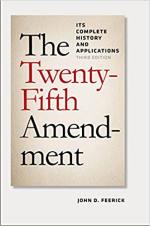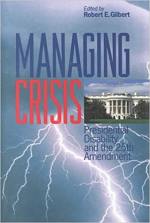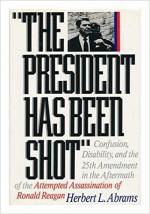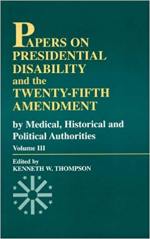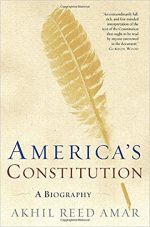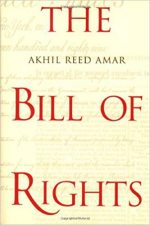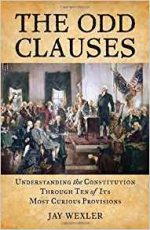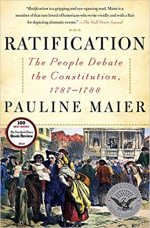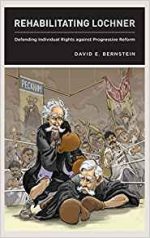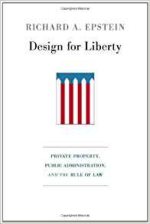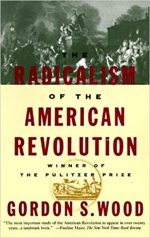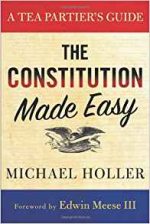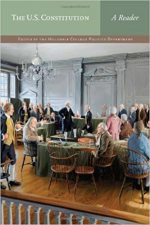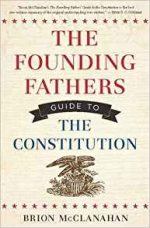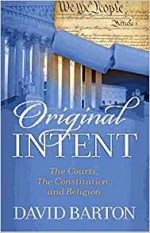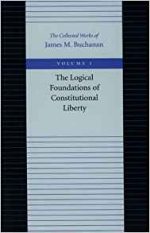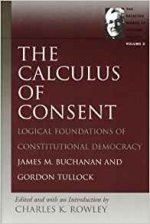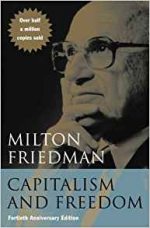The Constitution of the United States: Amendment 25 (Twenty-Fifth Amendment)
Amendment XXV. (Presidential Disability and Succession)
Passed by Congress July 6, 1965. Ratified February 10, 1967.
Note: Article II, section 1, of the Constitution was affected by the 25th amendment.
Section 1.
In case of the removal of the President from office or of his death or resignation, the Vice President shall become President.
Section 2.
Whenever there is a vacancy in the office of the Vice President, the President shall nominate a Vice President who shall take office upon confirmation by a majority vote of both Houses of Congress.
Section 3.
Whenever the President transmits to the President pro tempore of the Senate and the Speaker of the House of Representatives his written declaration that he is unable to discharge the powers and duties of his office, and until he transmits to them a written declaration to the contrary, such powers and duties shall be discharged by the Vice President as Acting President.
Section 4.
Whenever the Vice President and a majority of either the principal officers of the executive departments or of such other body as Congress may by law provide, transmit to the President pro tempore of the Senate and the Speaker of the House of Representatives their written declaration that the President is unable to discharge the powers and duties of his office, the Vice President shall immediately assume the powers and duties of the office as Acting President.
Thereafter, when the President transmits to the President pro tempore of the Senate and the Speaker of the House of Representatives his written declaration that no inability exists, he shall resume the powers and duties of his office unless the Vice President and a majority of either the principal officers of the executive department or of such other body as Congress may by law provide, transmit within four days to the President pro tempore of the Senate and the Speaker of the House of Representatives their written declaration that the President is unable to discharge the powers and duties of his office. Thereupon Congress shall decide the issue, assembling within forty-eight hours for that purpose if not in session. If the Congress, within twenty-one days after receipt of the latter written declaration, or, if Congress is not in session, within twenty-one days after Congress is required to assemble, determines by two-thirds vote of both Houses that the President is unable to discharge the powers and duties of his office, the Vice President shall continue to discharge the same as Acting President; otherwise, the President shall resume the powers and duties of his office.
The 25th Amendment Explained: American Government Review
More
- The Constitution of the United States: Amendments 11-27, from The National Archives
- Twenty-fifth Amendment – CRS Annotated Constitution
- Twenty-fifth Amendment – Wikipedia
- Twenty-fifth Amendment – Findlaw
- Constitution of the United States of America: Analysis and Interpretation, Govinfo.gov
- Chapter 8.H. 25th Amendment in Congressional Procedure
- Election Capitol Hill Workshop
- Mid-Term Election (CongressionalGlossary.com)
- “7 stages of the office seeker“
- Vice President (CongressionalGlossary.com)
- Speaker (CongressionalGlossary.com)
- President Pro Tempore (CongressionalGlossary.com)
- President of the Senate (CongressionalGlossary.com)
- Presidential Succession (CongressionalGlossary.com)
- Presidential Succession Act, Senate
- Presidents of the United States – White House
- “The First Day of a New Congress: A Guide to Proceedings on the Senate Floor,” CRS Report RS20722 (14-page PDF
 )
) - “Presidential and Vice Presidential Succession,” CRS Report RL31761 (30-page PDF
 )
) - “The President-Elect: Succession and Disability Issues During the Transition Period,” CRS Report RS22992 (8-page PDF
 )
) - “Continuity of Operations (COOP) in the Executive Branch: Issues in the 109th Congress,” CRS Report RL32752 (26-page PDF
 )
) - “Continuity of Congress: Enacted and Proposed Federal Statutes for Expedited Election to the House in Extraordinary Circumstances,” CRS Report RL32958 (16-page PDF
 )
) - “Continuity of Government: Current Federal Arrangements and the Future,” CRS Report RS21089 (8-page PDF
 )
) - “Contingent Election of the President and Vice President by Congress: Perspectives and Contemporary Analysis,” CRS Report R40504 (24-page PDF
 )
) - “Presidential Elections: Vacancies in Major-Party Candidacies and the Position of President-Elect,” CRS Report R44648 (14-page PDF
 )
) - “Presidential Disability Under the Twenty-Fifth Amendment: Constitutional Provisions and Perspectives for Congress,” CRS Report R45394 (39-page PDF
 )
) - “Presidential Succession: Perspectives and Contemporary Issues for Congress,” CRS Report R46450 (36-page PDF
 )
) - “The Twenty-Fifth Amendment: Sections 3 and 4—Presidential Disability,” CRS InFocus IF11756 (5-page PDF
 )
) - Presidential Succession – Heritage Guide to the Constitution
President Richard Nixon – Address Announcing Resignation
50th Anniversary of the 25th Amendment: February 10, 1967
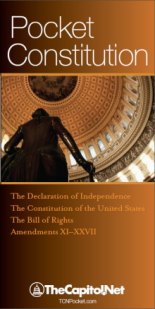
A free download of our Pocket Constitution is available on Scribd.
Our Pocket Constitution: details on our web site.
David Hawkings’ Whiteboard: What’s the 25th Amendment?
For more than 40 years, TheCapitol.Net and its predecessor, Congressional Quarterly Executive Conferences, have been teaching professionals from government, military, business, and NGOs about the dynamics and operations of the legislative and executive branches and how to work with them.
Our custom on-site and online training, publications, and audio courses include congressional operations, legislative and budget process, communication and advocacy, media and public relations, testifying before Congress, research skills, legislative drafting, critical thinking and writing, and more.
TheCapitol.Net is on the GSA Schedule, MAS, for custom on-site and online training. GSA Contract GS02F0192X
TheCapitol.Net is now owned by the Sunwater Institute.
Teaching how Washington and Congress work ™

